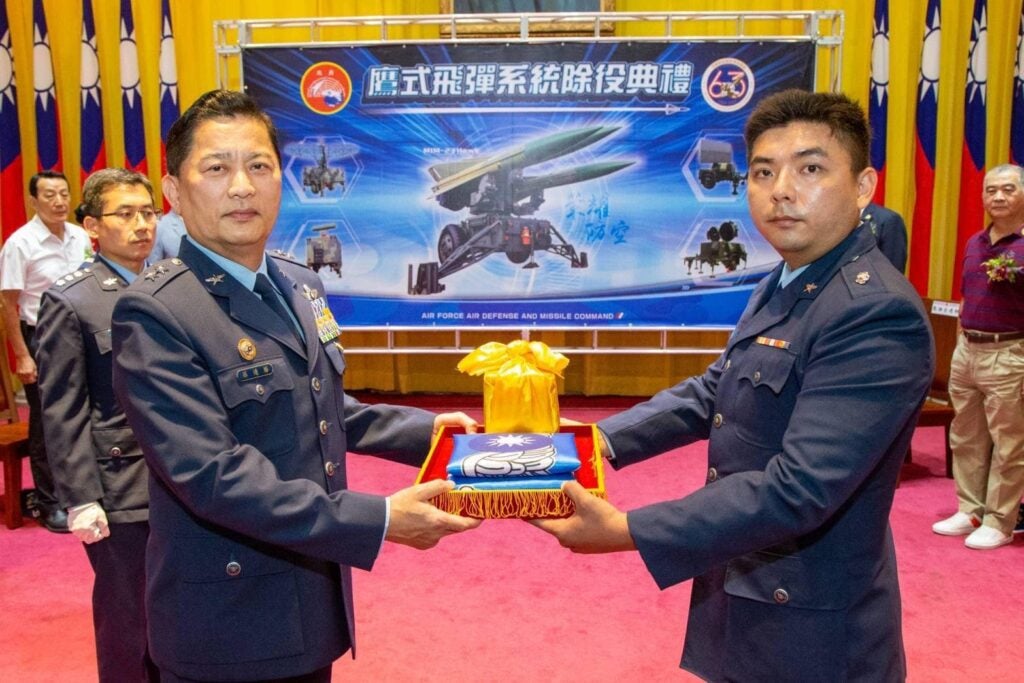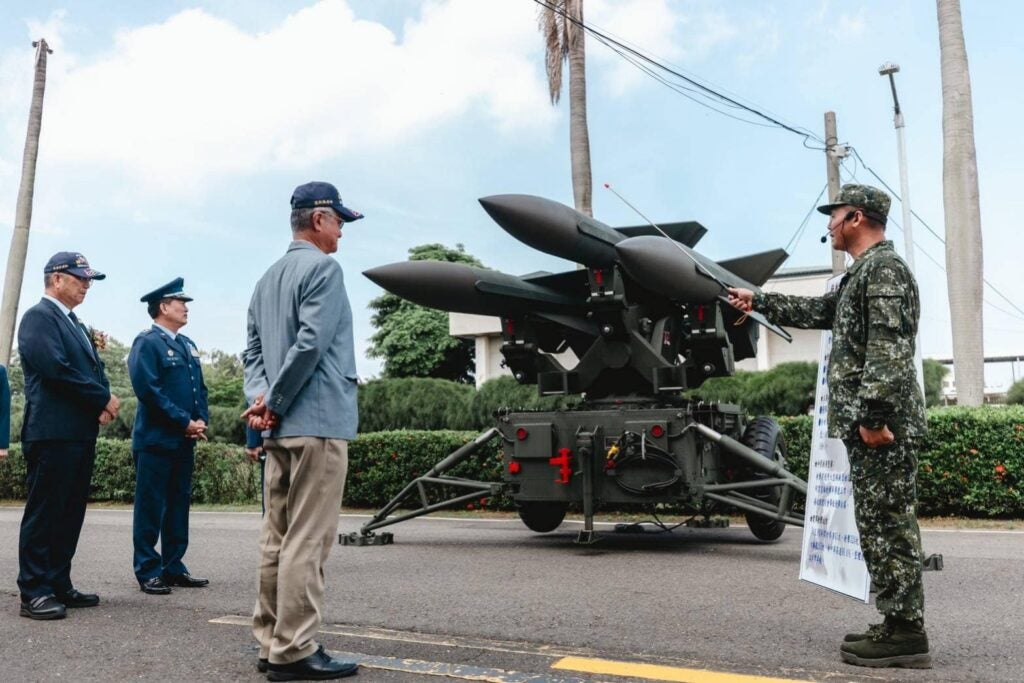Taiwan Retires Last Hawk Surface to Air Missiles
Taiwan officially retired its MIM-23 Hawk surface to air missile systems on 29 June, with a ceremony at the Republic of China Air Force’s Air Defense and Missile Command headquarters in Tainan marking the end of the system’s 63 years of Taiwanese service.
Taiwan received its first Hawks in 1960, with the Republic of China Army and Air Force using them for short to mid-altitude air defense. The Republic of China Army’s Hawk crews were rated by United States evaluators as the best foreign operators of the missile system, with one battery receiving a perfect score during one such evaluation in the 1970s. Following a reorganization of the Taiwanese military’s air defenses, the Hawks were consolidated under the ROCAF’s Air Defense and Missile Command in 2006.
In a speech at the event, ROCAF vice-chief Lt. Gen. Sun Lian-Sheng said that the Hawk was Taiwan’s longest-serving surface to air missile system, urging troops present to continue the Hawk operators’ tradition of excellence in defending Taiwan from aerial threats.

The Hawk batteries were initially stationed to cover southwestern Taiwan, with some batteries stationed on Green Island off Taiwan’s southeastern coast from 2018 to monitor increasing People’s Liberation Army activities off Taiwan’s eastern shore.
The Hawk is being replaced in Taiwanese service by the Taiwanese Tien Kung (Sky Bow) 3 surface to air missile system, with mass production of the system accelerated in 2019 to facilitate the replacement process. The Tien Kung 3 is augmented by American Patriot PAC-3 batteries, with both systems capable of ballistic missile defense in addition to air defense.
According to the United Daily News, the Taiwanese military is exploring the feasibility of transferring the Hawk batteries’ search radars to the Republic of China Army’s air defense units following their retirement, strengthening the Army’s ability to detect and engage low-level aerial threats.

